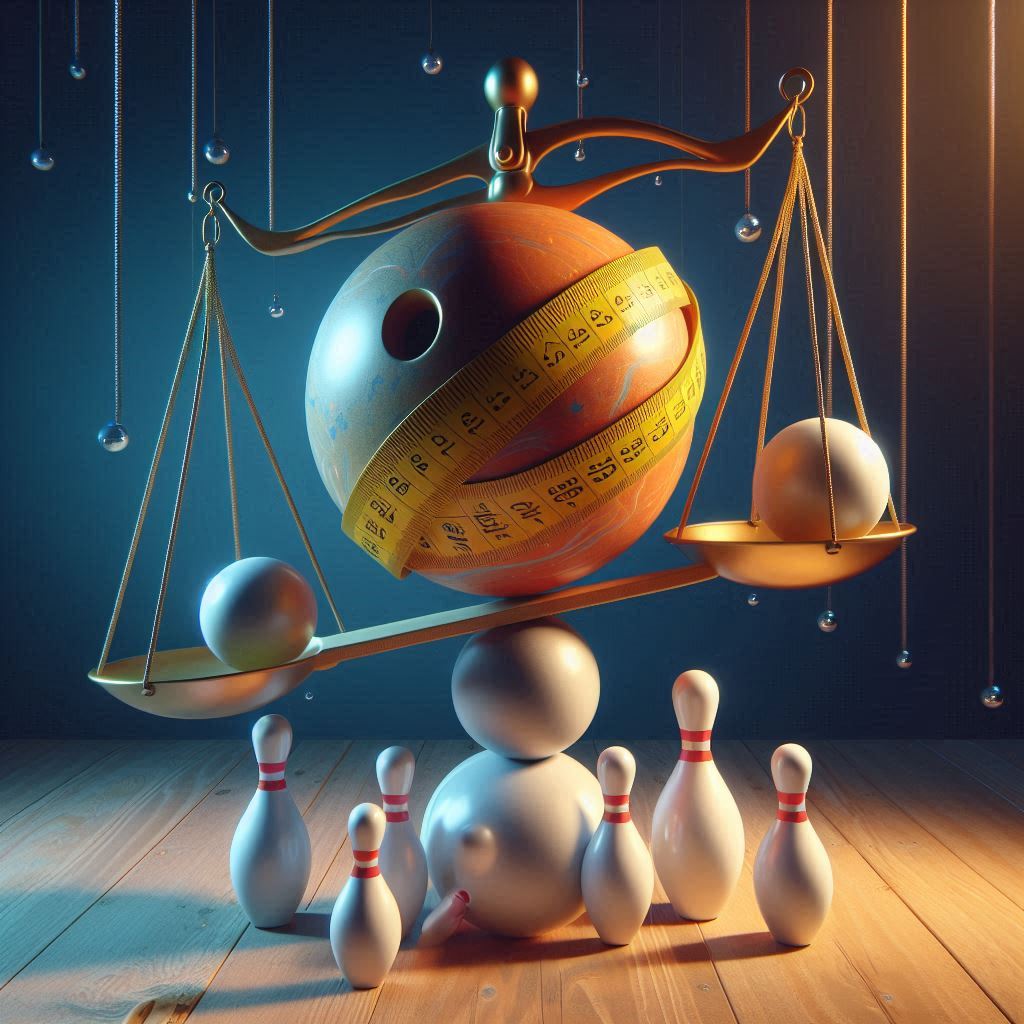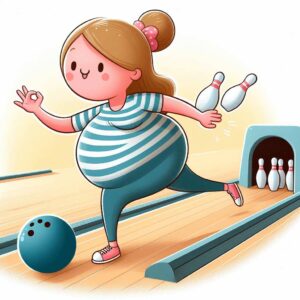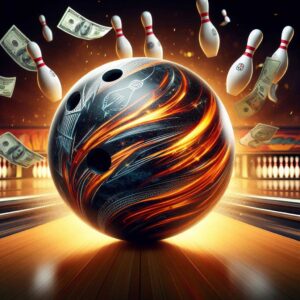Selecting the right bowling ball size is crucial for both performance and injury prevention in the sport of bowling. Using a ball that is too heavy or with an improper grip size can not only hinder your ability to play your best, but it can also lead to discomfort, strain, and potential injuries over time.
Whether you’re a seasoned bowler or just starting out, finding the perfect ball weight and grip fit is essential for maximizing your game and staying safe on the lanes. In this comprehensive guide, we’ll dive into the key factors to consider when choosing a bowling ball size, including weight, grip span, and professional fitting techniques.
Bowling Ball Weight
The weight of a bowling ball is one of the most critical factors to consider when selecting the right size. Standard bowling balls range in weight from 6 to 16 pounds, with most adult balls falling between 10 and 16 pounds. The ideal ball weight for you will depend on several factors, including your height, strength, and experience level.
For beginners and casual bowlers, a lighter ball in the range of 6 to 10 pounds is generally recommended. This weight allows for better control and reduces the risk of injury from improper form or excessive strain. As you gain experience and develop your technique, you may consider moving up to a heavier ball to generate more power and pin action.
Intermediate and experienced bowlers often prefer balls in the 12 to 16-pound range. Heavier balls have more momentum and can carry through the pins with greater force, potentially resulting in higher scores. However, it’s important to note that using a ball that is too heavy for your strength and skill level can lead to poor form, discomfort, and potential injuries to the wrist, elbow, and shoulder.
When selecting a ball weight, it’s crucial to consider your overall physical ability and bowling style. A general guideline is to choose a ball that feels comfortable and manageable throughout your entire approach and release. If you find yourself straining or struggling to control the ball, it’s likely too heavy for your current strength and technique.
Grip Size & Span
In addition to ball weight, the grip size and span are equally important factors to consider for a comfortable and consistent release. The grip size refers to the circumference of the holes in the ball, while the span is the distance between the thumb and finger holes.
Proper grip sizing is essential for maintaining control and accuracy during your release. If the holes are too large or too small for your hand, it can cause discomfort, inconsistent release, and potential injury over time. The same goes for grip span – an incorrect span can lead to poor fit, decreased control, and strain on your wrist and hand.
To determine your ideal grip size, you’ll need to accurately measure the circumference of your hand at the base of your fingers. Most pro shops and ball manufacturers provide grip size charts that correspond to these measurements, ensuring a snug but comfortable fit.
For grip span, the standard recommendation is to have a span that allows your thumb and fingers to fit comfortably in the holes without excessive stretching or strain. This measurement can vary based on individual hand size and finger length.
Drilling the Perfect Fit
While understanding ball weight and grip sizing is important, the best way to ensure a truly personalized fit is to have your ball professionally drilled and fitted by a trained pro shop technician. These experts have the knowledge and tools to precisely drill holes that match your unique hand size, shape, and grip preferences.
During a professional fitting, the technician will take various measurements, including your grip size, span, and even the specific contours of your hand. They’ll then use specialized equipment to drill the ball accordingly, ensuring a custom fit tailored to your individual needs.
There are two main drilling styles to consider: conventional grip and fingertip grip. Conventional grip drilling places the holes closer together, allowing for a more relaxed hand position during the swing. Fingertip grip drilling, on the other hand, positions the holes further apart, promoting a more aggressive release and increased rev rate.
Your pro shop technician can guide you through the pros and cons of each drilling style and help you determine the best option based on your skill level, desired ball reaction, and personal preferences.
Tips for Adjusting to a New Ball
Even with a perfectly drilled and fitted ball, there may be an adjustment period as you get used to the new size, weight, and grip. Here are some tips to help make the transition smoother:
Break in the ball gradually:
Don’t jump right into extended bowling sessions with your new ball. Start with shorter games or practice sessions to allow your hand and body to adapt to the new feel and weight.
Strengthen your grip:
If you’ve moved up to a heavier ball, consider incorporating grip strengthening exercises into your routine. Squeezing a stress ball or using a grip trainer can help build the necessary hand and forearm strength.
Adjust your approach:
A change in ball weight or grip may require minor adjustments to your approach and release. Experiment with your footwork, timing, and release point to find the optimal technique for the new ball.
Be patient:
Adapting to a new ball takes time and repetition. Don’t get discouraged if your scores or consistency dip initially. With practice and perseverance, your body will adapt, and your game will improve.
Children’s Ball Sizes
Choosing the right bowling ball size is equally important for young bowlers. As children grow and develop, their ball size needs will change accordingly. Here are some general guidelines for selecting appropriate ball weights and grip sizes for kids:
- For children under 8 years old, a 6 to 8-pound ball is typically recommended.
- Between 8 and 12 years old, a ball weight of 8 to 10 pounds is often suitable.
- For teenagers and older children, a 10 to 12-pound ball may be appropriate, depending on their size and strength.
It’s crucial to have a pro shop technician properly fit and drill a ball for your child’s hand size. Using an ill-fitting or excessively heavy ball can lead to poor form, discomfort, and potential injuries that could hinder their development and enjoyment of the sport.
As your child grows, it’s important to regularly reassess their ball size and grip needs. Bowling centers and pro shops often offer ball trade-in or upgrade programs to help offset the cost of acquiring new equipment as your child progresses.
Pro Shop Advice
While this guide provides a solid foundation for understanding bowling ball size considerations, consulting with a professional pro shop is highly recommended, especially for intermediate to advanced bowlers. These experts have in-depth knowledge and experience in ball fitting, drilling, and coaching.
At a reputable pro shop, you’ll have access to a range of services, including:
- Professional ball fitting and drilling: Experienced technicians will take precise measurements and use specialized equipment to ensure a perfect fit for your hand size and grip preferences.
- Coaching and technique analysis: Pro shop staff can observe your bowling form, identify areas for improvement, and provide personalized coaching to help you optimize your technique for your new ball size and weight.
- Equipment recommendations: In addition to ball sizing, pro shops can advise you on selecting the appropriate ball coverstock, core design, and other specifications to match your desired ball reaction and lane conditions.
- Custom drilling options: Many pro shops offer advanced drilling techniques, such as balance holes, weight blocks, and other customizations to fine-tune the ball’s performance and dynamics.
Finding a reputable pro shop in your area is essential for maximizing your bowling experience and ensuring proper equipment fitting. Ask fellow bowlers for recommendations, read online reviews, and look for shops staffed by certified technicians and coaches.
Conclusion:
Choosing the right bowling ball size is a critical aspect of the sport that can significantly impact your performance, comfort, and safety on the lanes. By understanding the factors of ball weight, grip size, and professional fitting techniques, you can select equipment that perfectly matches your individual needs and abilities.
Remember, using a ball that is too heavy or with an improper grip fit can not only hinder your game but also increase the risk of discomfort and potential injuries. Take the time to accurately measure your hand size, consult with a pro shop technician, and gradually break in any new equipment to ensure a smooth transition.
Investing in the right bowling ball size and getting professionally fitted may require some initial effort and expense, but the long-term benefits of improved performance, consistency, and injury prevention make it a worthwhile investment for any bowler, regardless of skill level.
So, whether you’re a seasoned pro or just starting your bowling journey, prioritize finding the perfect ball size and grip fit. Your game, comfort, and overall enjoyment of the sport will thank you for it.





